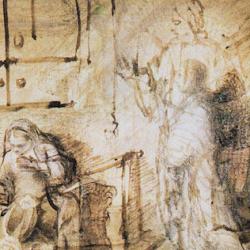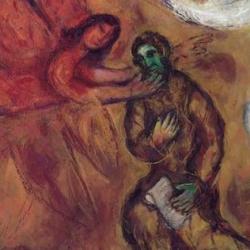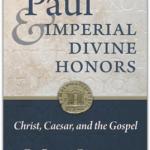In a 1 993 JSOT article, Anthony Tomasino examines the beginning (1:1-2:4) and end (63-66) of the canonical book of Isaiah, arguing that the two sections share not only vocabulary and themes but also have a common structure.
He points, for example, to the references to “heaven and earth” that occur in 1:2, and again in 65:17, 66:1, 22. While “it would appear that the various occurrences of the ‘heaven and earth’ merismus are largely unrelated to one another,” the “meaning of the merismus in these passages is not as significant as its position. It is important to note that the same word pair appears at the beginning of the first oracle of the book, in 1.2, and the beginning of the last oracle, in 66.1” (84).
Similarly, Yahweh’s paternal plea to Israel as son at the outset is not filled out at any length until chapter 63: “After Trito-Isaiah’s many promises of restoration and glory, the narrative breaks into a lengthy prayer for divine intervention, stretching from 63.7 to 64.11. The basis for this appeal is the relationship between YHWH and his people. The ‘father-son metaphor’ appears at once, in 63.8. The verse reads: ‘For he said, Surely, they are my people; sons who would not be false. So he became their savior.’ The passage goes on to recount how the people rebelled and caused YHWH to turn against them (63.10). But the speaker prays for forgiveness and divine intervention on the people’s behalf. He appeals to the family imagery: ‘You are our father, even though Abraham does not know us, and Israel does not recognize us. You, YHWH, are our father; our redeemer from eternity is your name’ (63.16)” (85).
He finds close parallels between the sequence in 1:10-20 and 66:1-6. Each moves from condemnation of the cult to a call for repentance/judgment for impenitent, to blessing and comfort to judgment (88). More generally, he sees the following links:
1. Heaven and earth, 1:2; 66:1
2. Son, 1:2-9; 63:7-64:11
3. Polemic against cult, 1:10-20; 66:1-6
4. Personification of Zion, 1:21-26; 66:7-13
5. Redemption and judgment of Zion, 1:27-31; 66:14-17
6. Gathering of nations, 2:2-4; 66:18-24
7. Unquenchable fire, 1:31; 66:24
That is, not only is there abundant evidence of shared vocabulary and theme, but there is a similarity of sequence.
(Tomasino, “Isaiah 1.1-2.4 and 63-66, and the Composition of the Isaianic Corpus,” Journal for the Study of the Old Testament 75 [1993] 81-98.)














